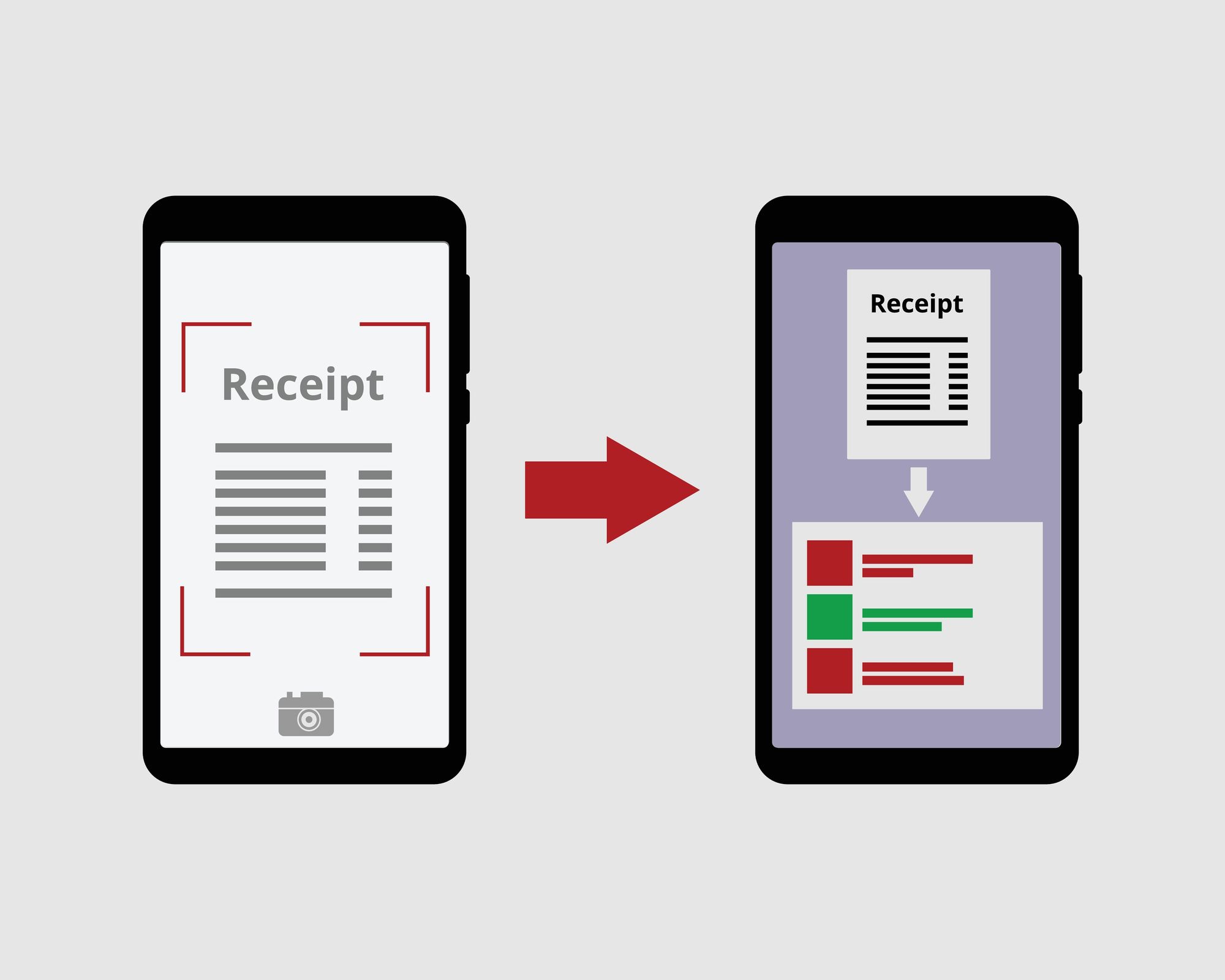
When a product is being shipped from the vendor to a client through a carrier, the carrier issues a Bill of Lading or BoL It is a contract between the carrier and the vendor and is a written record of the items being shipped, their source and their destination. It is also a receipt issued by the carrier once the shipment has been delivered.
Read on to know more about BoLs and how to intelligently extract data from bills of lading.
Need for Bill of Lading
The BoL is a legally binding document that contains the essential details of the goods being shipped from the vendor to the client using a particular shipper/carrier. It has three functions:
- It serves as a receipt for the goods shipped.
- It serves as written proof of contract for shipment between the supplier (usually an exporter) and the carrier.
- It serves as a document of title.
The BoL is a mainstay of the global supply chain, especially in the context of export, and is important for customs clearance and financing of shipments. because
- It has essential details such as the name of the product being shipped, type and quantity of goods, details of the shipper and transport mode, consignee (receiver) information and delivery destination.
- It provides the basis for the determination of freight charges and customs fees payable to port/airfreight authorities.
- It establishes ownership of the cargo when the product is en route to the client’s destination
The identification and extraction of data from the Bill of Lading is therefore a critical activity in the shipment of goods.
Types of Bill of Lading
The BoL is classified as follows, according to various parameters:
Elements of Bill of Lading
The essential information that must be extracted from BoL are:
- Shipment ID or Reference Numbers
- Vendor/consigner name, address and contact details
- Receiver/Consignee section such as name, delivery destination, address, contact details, delivery schedule, etc.
- Carrier Details such as name, intermediate shipment number, etc.
- Freight Information including total number of items, details, weight of shipment, dimensions of shipment, freight class, shipping and handling instructions, etc.
- Declared value of the shipment including details of insurance and settlement/compensation claims in case of failure of delivery.
- Pricing and Payment information
- Dated signatures of all parties involved in the shipping process
Apart from the above essential information, each vendor, purchaser, shipping agency and government may have their own specific set of information that must be included in the BoL, especially in cases of export operations.
Challenges in the manual extraction of data from the Bill of Lading
The extraction of data from BoL can be cost-intensive, time-consuming, and error-prone, when done manually. The processing steps require well-trained people who can identify the relevant information in the bill and extract them from complex layouts consistently. Some specific challenges to manual processing of BoL include:
1. Cost penalties
While manual extraction of Bill of Lading data may have worked for small companies with limited operations, it becomes costly as the shipping company, the transporter, or the exporter (vendor) expands. In many cases, manual extraction of BoL data becomes associated with hidden costs beyond the obvious costs associated with hiring more employees to do the data extraction. The addition of more employees into the BoL data extraction workflow leads to coordination issues, which can in turn lead to errors, especially in data identification and entry. Validation of the data is a critical process that adds to the cost component of BoL processing.
Manual data extraction and entry into a database not followed by verification steps can have error rates as high as 4%. The 1-10-100 data entry rule is well known in data entry circles – the verification of data accuracy at the point of entry costs $1, cleaning up of errors costs $10 in batch form, and uncorrected errors cost the company $100 or more.
2. Time delays
Manual extraction of BoL data can become time-consuming, especially in global supply chains because multiple checks and approvals are required. Integrating various steps in the BoL can also become complicated in manual processes because of the various people involved in the hierarchy and levels of approvals required.
3. Human fallibility
The process of manual data extraction of BoL information is repetitive and tedious and can be demoralising. Furthermore, Bills of Lading do not have a standard format. While the information listed in the earlier section are present in all BoLs, each carrier/shipper would use a different format with significant spacial variability of the data. Manual data extraction, however, carefully done, can be taxing given these variabilities. Language variations between the place of issue and place of delivery can also pose a significant challenge in data comprehension.
The use of AI-based tools to extract data from Bill of Lading
Manual extraction of BoL data can potentially be replaced by data extraction software. However simple OCR tools are not useful in BoL processing because of the following reasons:
- Data extraction from multiple formats: BoLs are of various format types and a simple extraction tool cannot capture data accurately. Coherence of data extracted from various sources is poor with basic OCR, especially if the sources are both structured and unstructured.
- All matter present in the parent BoL is extracted with no differentiation by relevance or importance. Oftentimes, this kind of data extraction entails further manual extraction of relevant data from the ensemble of information indiscriminately gathered from the original document, causing time delays.
- Data security is another area that can be challenging in the use of simple data extraction tools in BoL processing. Financial data, for example, are highly sensitive and data security must be ensured by organizations that use automated data entry tools for data management.
AI-enabled data extraction software can overcome the above disadvantages of simple OCR.
AI-enabled data extraction tools can extract data from of a variety of sources such as forms, emails, and more. Such tools are already used by businesses to generate leads, extract information from public documents and webpages of competitors, identify trends, and improve the analysis of otherwise unstructured information.
AI-based data extraction tools are useful for BoL applications because they can be trained to collate data in a sensible manner that make them suitable for subsequent processing operations. Furthermore, such tools may be integrated with data quality software and data preparation software to clean and organize data after scraping. It can also be combined with data integration software so that multiple data types and sources can be aggregated in one place.
Setting up AI-based data extraction tools for BoL processing
The choice of “smart” data extraction and management tool depends on the following factors:
- The fit to the needs of the business: Each carrier/shipping company has its own requirements and styles when it comes to the BoL data capture process. The ability of the software to incorporate the company’s practices and policies must be assessed. It is important to assess how different AI-enabled data management systems align with the overall rules and logistics of the shipping company before choosing the best fit.
- Budget: The amount of money to be invested in setting up a BoL extraction system depends on the scale of the shipping/carrier organization, the bottom line, and the investment potential of the company
- Ease of use: Even for AI-enabled data extraction and management systems, a certain amount of human intervention is required during setup and implementation. The skill level of the employees using the software will decide how user-friendly the front end of the software should be, and the level of tech support that will be required of the developer. The need for training and tech-support must also be addressed before choosing the right tool for the purpose.
- The extent of spread and collaboration: Most carrier companies are spread across states or even countries and are interconnected in their activities. The AI-enabled data extraction system must be able to provide access at various levels and allow easy collaboration among all participants beyond geographic boundaries. There also needs to be provision to include various levels of approvals in the process.
- The extraction of data from BoL is simply the first step in the entire shipping process. Other steps in the process such as approvals, shipment tracking, etc., may also use smart tools that must be integrated with it. Other essentially automatable activities include accounting management, which must also be potentially integrated with the data extraction tool. Standalone data extraction tools that do not integrate with other digital tools used by the carrier would lead to data mismanagement and time loss.
A significant challenge in setting up an AI-enabled system to extract data from BoL is the design of workflows for logistics automation. Constant monitoring is also essential – set-and-forget is not an option and lack of monitoring can result in obsoleting of functionalities.
Nanonets for intelligent capture of BoL data
Nanonets is an AI-based OCR software that can ease data extraction and management in the BoL process because it leverages AI & ML capabilities to automatically extract unstructured/structured data from PDF documents, images, and scanned files.
The AI-driven cognitive intelligence of Nanonets allows handling of semi-structured and even unseen document types while improving over time. The Nanonets algorithm & OCR models learn continuously. They can be trained or retrained multiple times and are very customizable.
The Nanonets API provides high speeds and great accuracy in line item extraction of data and drives automation for line item management. The output can be customized, to only extract specific tables or data entries of interest.
Nanonets is particularly useful to extract BoL data because of the following features:
- Accurate detection of the table structure of a line item containing documents like forms.
- All the line item entries that are present in the forms like name, product, price, total sum, discounts, etc.
- The data can be extracted as JSON output that can enable the building of customized apps and platforms.
- While offering a great API & documentation for developers, the software is also ideal for organizations with no in-house team of developers.
Additional factors that make Nanonets a good option for smart BoL data extraction include:
- It is a truly no-code tool
- Easy integration of Nanonets with most CRM, ERP, content services, or RPA software.
- Multiple language processing: Nanonets OCR can recognize handwritten text, images of text in multiple languages at once, images with low resolution, images with new or cursive fonts and varying sizes, images with shadowy text, tilted text, random unstructured text, image noise, blurred images and more. This is, as can be understood, particularly relevant to the carrier who functions in different countries or must transport goods between regions that use different languages..
- Works with custom data through the use of custom data for training OCR models.
- Independence from formats: Nanonets is not bound by the template of documents at all. You can capture data cognitively in tables or line items or any other format.
Takeaway
With the adoption of intelligent automation in all aspects of business in today’s world and the increasing move towards hyperautomation, it is essential for the import-export and supply chain operations to adopt smart automation practices as well. The automation of Bill of Lading management is the first step towards automating the supply and export/import chain. Intelligent automation of BoL data management will help in ensuring transparency of the process and seamless transition of supplies and goods without delays associated with information validation and management. AI-enabled data capture tools like Nanonets can help carriers and shipping companies stay competitive through enhancements in their core competencies of customer service, innovation, expansion, and productivity.
